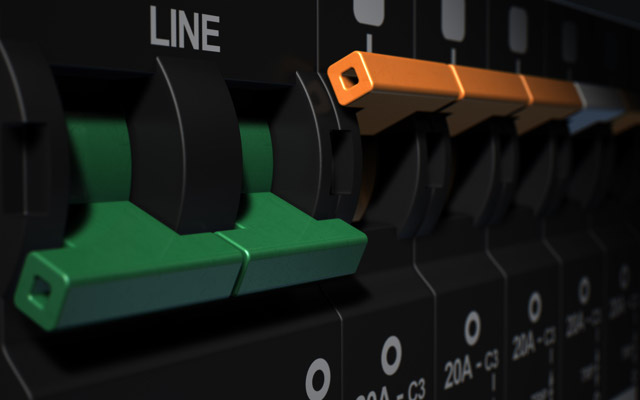Circuit Breaker Trips: Why They Happen
Posted on 3 March 2018

Have you ever tried plugging in your TV set or switching on the lights on only to find that nothing works after a barely audible click? Well, it is likely that your circuit breaker has tripped again. Well, it only takes a simple reset procedure to get things up and running again, but the key is that doing so doesn’t get to the root cause of the problem. You should work at figuring out where the problem really lies, so that you can fix it for the long term. Basically, circuit breakers act as safety nets intended at preventing electrical overloads, which can lead to extensive damage and fires. Let’s have an in-depth look at why circuit breakers trip to help you solve your problem once and for all.
How Can You Tell If Your Circuit Breaker Has Tripped?
As earlier stated, circuit breakers work at protecting all the electrical circuits of your home. If the power goes off in a specific area of your home rather than the whole property, it is highly likely that you have a tripped circuit breaker. All you have to do when this happens is simply go to the electrical panel or fuse box and reset the tripped breaker. If the circuits aren’t labelled, try switching each switch on and off to identify which area they control. Once you’ve acquired this info, keep a log of it in a phone for future references!
Why Do Circuit Breakers Trip?
Overloaded circuit
The most common reason behind most Singapore power trip are overloaded circuits. Generally, this occurs when a certain circuit draws more power than it can handle. For instance, when most of your appliances are operating at the same time, the circuit wiring tends to heat up and when the circuit breaker identifies this, it will automatically trip. This breaks the circuit and shuts down the electric flow. This is what saves you from potentially frying your circuits and starting an electrical fire.
Short circuit
Short circuits are more complex than overloaded circuits, meaning it is a call for concern when it happens. Short circuits are basically caused when two hot wires come into contact. However, worth noting is short circuits can also happen from faulty wiring in an appliance and not necessarily an issue with the circuit wiring within the home or other space. Its is safe to say that short circuits can be quite difficult to identify and fix, meaning your safest bet lies in a qualified electrician.
Ground-fault
Ground-faults occur when a hot wire touches wood framing or the metal wall box. They can be extremely dangerous more so in spaces where water and moisture are in high amounts such as the kitchen or bathroom. Put simply, this is a problem best left for the experts to handle.
Why You Shouldn’t Ignore Frequent Power Trips:
As earlier mentioned, a circuit breaker will trip, only when there is a problem with your circuitry. In short, it is a call for concern when it happens frequently. Keeping in mind that the breakers serve as a safety net when malfunctions occur, it would certainly be in your best interest to contact a qualified electrician when they do happen in regularly. It is paramount to keep in mind that these devices work at preventing extensive damage such as fire or electrocution. It is therefore advisable to take the frequent circuit breaker trips seriously and avoid attempting diagnosis or attempting to make repairs on your own.
How to Reset Tripped Circuit Breakers:
Resetting a tripped circuit breaker isn’t rocket science and all you have to do is simply move the switch to off, prior to turning it back on. For safety purposes, always stand as far away as possible when resetting or even standing to the side of the switch panel. Moreover, wear goggles to prevent any sparks that may come flying your way. Never attempt to reset a circuit breaker when it’s dark, meaning it would be in your best interest to always keep a flashlight near the panel to illuminate the circuits in the dark. Once you’ve taken care of the power trip, always leave your appliances off for a few minutes before turning them back on. This can go a long way in helping you determine whether an overloaded circuit was the main reason behind your power trip.